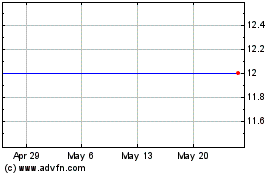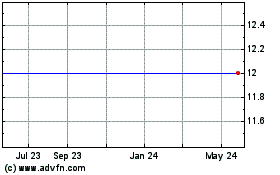2nd UPDATE: AstraZeneca Starts Mid-Stage Trial Of CytoFab
October 25 2010 - 11:05AM
Dow Jones News
U.K. drug maker AstraZeneca PLC (AZN.LN) Monday said it began a
mid-stage trial of an experimental treatment for sepsis,
underscoring its interest in new drugs for treating infections and
giving a small boost to shares in BTG PLC (BGC.LN), which is in
line for substantial royalties on sales of the drug if it makes it
to market.
AstraZeneca said it began dosing the first of 300 patients in a
Phase IIb trial of CytoFab, or AZD9773. The aim of the trial is to
measure the number of days sepsis patients treated with CytoFab
spend off a ventilator within 28 days of first being treated
compared with those who receive a dummy medicine.
An AstraZeneca spokeswoman said results are expected in late
2011 or early 2012. A pivotal Phase III trial should commence in
the first half of 2013, assuming CytoFab is successful in mid-stage
studies, she said. A second Phase II study has started in
Japan.
AstraZeneca licensed CytoFab from U.K. biotechnology company
Protherics PLC in a 2005 deal worth up to GBP195 million if it
proves successful in clinical trials and gets to market.
The remaining payments, plus royalties on sales of CytoFab, are
now due to BTG, which acquired Protherics in 2008.
Analysts Keith Redpath at FinnCap and Paul Cuddon at KBC Peel
Hunt said CytoFab is potentially BTG's most valuable partnered
asset, assuming it works, because of the substantial royalties it
can expect to receive.
Redpath said BTG is effectively in line for royalties equivalent
to 25% of CytoFab sales, based on a royalty rate of 20% on sales
and extra payments for manufacturing the drug.
That compares with a royalty of 3% on sales of Campath, a
blockbuster drug for a type of blood cancer sold by Genzyme Corp.
(GENZ) that has become a key plank in the U.S. biotech's defense
against a hostile takeover by Sanofi-Aventis SA (SAN.FR).
Campath has the potential to be a big earner for BTG if
Genzyme's sales projections for the drug are borne out. Genzyme
said Friday it expects Campath sales could reach $3 billion to $3.5
billion by 2017 if it receives approval for multiple sclerosis.
But Redpath estimates the market for sepsis treatments could be
worth as much as $7 billion a year as there is a major need for new
treatments. Other estimates put the potential market at about $3
billion.
The condition is caused when the immune system sets off a chain
reaction in response to an infection that spreads throughout the
body, damaging organs and killing about 30% of the 3 million people
worldwide who succumb to it each year.
There are few treatments, and Cuddon added the field has a high
failure rate of candidates in late-stage trials.
At 1409 GMT, shares in BTG were 3.4 pence, or 1.5%, higher at
234 pence. AstraZeneca shares were 16.5 pence, or 0.5%, higher at
3,320.5 pence, compared with a 0.6% rise in the broader London
market.
AstraZeneca is eager to expand its presence in anti-infection
medicines and has a research facility dedicated to their study in
the U.S. An antibiotic called Merrem posted sales of $872 million
in 2009.
In December last year, it agreed to acquire France's Novexel for
at last $350 million, in a deal that added two advanced drug
programs to its pipeline and deepened an alliance in the field with
Forest Laboratories Inc. (FRX).
-By Jason Douglas, Dow Jones Newswires; 44-20-7842-9272;
jason.douglas@dowjones.com
Forest Road Acquisition (NYSE:FRX)
Historical Stock Chart
From Jun 2024 to Jul 2024

Forest Road Acquisition (NYSE:FRX)
Historical Stock Chart
From Jul 2023 to Jul 2024
